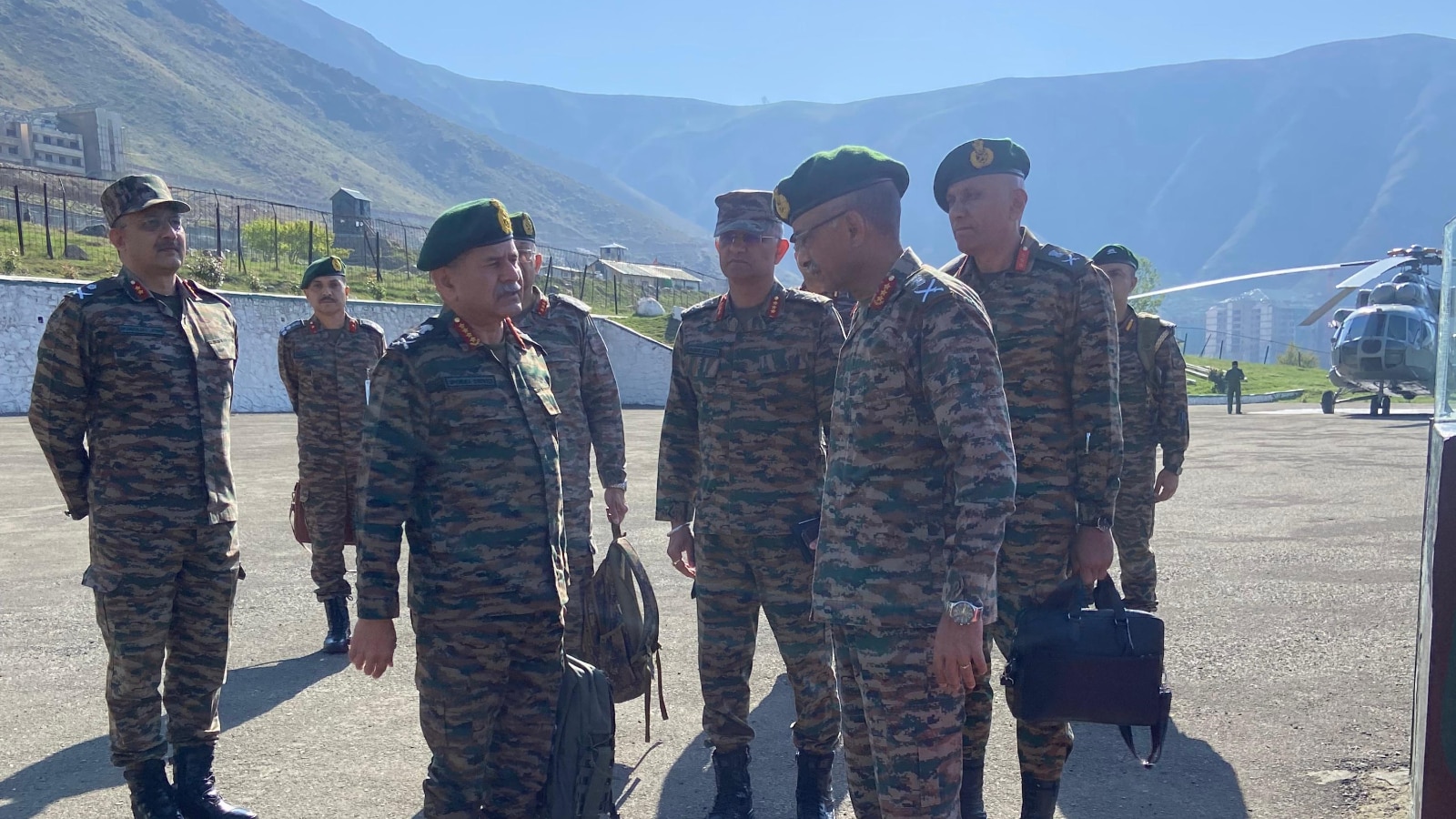Opinion | Was There An Intelligence ‘Blackout’ Behind The Pahalgam Attack?

On April 22, 2025, a surreptitious and shocking terror attack on unsuspecting tourists rattled the world—and a disbelieving India. The relative peace that the Kashmir Valley had enjoyed was abruptly shattered as 26 civilians, mostly tourists, were gunned down in cold blood by blind, fanatical extremists. The heinous killings carried a sharp religious overtone, as the attackers specifically confirmed the victims’ religious identity before opening fire. Indian politicians, as usual, were busy issuing asinine statements—including a Chief Minister who attributed the attack to security lapses and a failure of central intelligence. But was it truly an intelligence failure? Intelligence is a cloak-and-dagger affair: it exists to protect national borders, counter internal threats, reduce infrastructure vulnerabilities, and strengthen emergency responses. Threats involving unknown perpetrators, methods, and targets cannot be countered with conventional strategies designed for predictable adversaries. Fanatical religious terrorism, as seen in Kashmir, is multi-dimensional—its methods of attack are unpredictable, and potential targets are numerous, diverse, and constantly shifting. In an arena where multiple forces are at play—such as the Army, BSF, CRPF, and J&K Police—alongside a host of intelligence agencies, lapses in intelligence gathering and sharing are, unfortunately, almost inevitable. This time in Pahalgam, the tourists were lured into venturing into a remote location—one conspicuously lacking a security presence. Based on the facts and circumstances available in the public domain, it appears the terrorists had been lying in wait for this unfortunate group. The strike was swift and lethal, driven by religious fundamentalism and selectively targeted the men, after visually inspecting them for signs of circumcision. After committing the heinous killings, the cowardly terrorists fled into the forest to evade confrontation with security forces. It is nearly impossible for any intelligence agency to obtain credible information about a fleeting attack carried out by a small band of extremists. Even major terror operations—such as the one on 7 October 2023, when Hamas and other Palestinian militants launched an unprecedented attack from the Gaza Strip into the Gaza Envelope of southern Israel—can escape the notice of even the most reputed intelligence agencies, including Mossad. That attack began with a barrage of approximately 4,300 rockets, alongside militants using vehicles and motorised paragliders. They successfully assaulted military bases and massacred civilians across 21 communities. An estimated 6,000 Gazan terrorists breached the border at 119 locations, including 3,800 members from the elite “Nukhba Forces” and other militants. Despite the scale and coordination, this operation went completely undetected by foreign intelligence agencies, including the CIA. At times, it becomes impossible to penetrate the veil of secrecy surrounding terror operations planned in utmost stealth. This also speaks volumes about the capability of terrorist organisations to maintain complete operational silence and secrecy around their intended strikes. The writer had visited Kashmir and the Pahalgam Valley, including Baisaran, just a fortnight ago. What strikes any visitor is that many of these areas, including Gulmarg, are ‘guide-administered territories’. There is little visible presence of state government officials or police personnel to manage the crowds or regulate the conduct of the guides. The situation in Gulmarg is particularly troubling. Long, serpentine queues of unruly tourists are frequently disrupted by individuals attempting to jump the line to reach the cable cars faster, often resulting in heated altercations—and occasionally, physical confrontations. Local guides, largely unchecked, openly collect money from those wishing to bypass the queue, adding to the chaos. There is no police presence to maintain order, and the scattered central forces appear to lack the mandate to intervene. One could not help but think that such disorderly crowds, if targeted in a terror strike, would be tragically vulnerable. A closer look at the recent attack in Baisaran raises several troubling questions. Although videos of the aftermath have emerged, they are mostly from tourists—none appear to be recorded by the many horsemen, guides, or local vendors, most of whom are known to carry mobile phones. This absence is surprising and warrants scrutiny. Equally puzzling is how a Valley so frequented by tourists was left unpatrolled by the police. There were no visible surveillance cameras or drone monitoring. It is hardly surprising, then, that this location was selected by the cowardly terror-fanatics to carry out their heinous micro-aggression strike. Any capable intelligence agency would have ensured the deployment of heavily armed security personnel disguised as horsemen, guides, and peddlers in these areas—not only to gather intelligence but also to enable immediate retaliation or hot pursuit if needed. For the upcoming Amarnath Yatra, commandos in plain clothes, disguised as pilgrims, should accompany the yatris. Retaliation, when required, must be swift and uncompromising. When Opposition political parties raise the spectre of an ‘intelligence failure’, they often reveal a limited understanding of this highly specialised field. All nations today operate within an international system that is not only political but inherently anarchic. To survive in such a subtly hostile environment, a country requires a robust intelligence framework—one that protects the regime, ensures continuity, and safeguards national security. Fundamentalist terrorism remains one of the greatest threats to both national and international security. These threats, often posed by non-state actors covertly supported by hostile nations, can be extremely difficult to anticipate, detect, or neutralise. Many professional fundamentalist terror organisations are trained to operate in ways strikingly similar to national intelligence agencies: working in secrecy, conducting surveillance, and launching attacks during unguarded moments. The core principles for both are secrecy, silence, and surprise. The role of intelligence agencies in counterterrorism involves preventing, managing, and mitigating terror threats. However, there is no universally accepted metric for assessing the success of counterterror operations. Though many wars have been fought depending on strategic and tactical intelligence, the contributions, successes, or failures of the intelligence agencies are, as a rule, not discussed or acknowledged publicly. Acts of fanatic terrorism are designed to produce profound psychological effects on the intended audience. In this context, the Pahalgam terror attack appears to have achieved a dual objective: it has instilled a deep sense of psychological unease among the Indian public and stirred up a wave of war-like sentiment between India and Pakistan. While India is understandably demanding retribution, Pakistan is on the defensive—putting on a superficial display of innocence and attempting to buy time by proposing participation in an impartial enquiry. This latest surge in religiously motivated terrorism poses a threat not just to regional stability but to global security as well. A growing number of political leaders are beginning to acknowledge that unchecked terrorism remains a grave threat to future generations. In a widely circulated interview with Sky News presenter Yalda Hakim, Pakistan’s Defence Minister Khawaja Asif made a startling admission: “We have been doing this dirty work for the United States, for about three decades… and the West, including Britain.” In the realm of international relations, it is unwise to take at face value the public display of cordiality—treaties, handshakes, and smiles between world leaders. Beneath this polished exterior can lie the most diabolical intentions. It is the uncomfortable but critical task of intelligence agencies to uncover these hidden motives and detect the covert support extended to terror outfits, often masked behind diplomatic niceties. Today, many authors and specialists—particularly in the United States—use a range of terms such as mega-terrorism, super-terrorism, terrorism involving weapons of mass destruction (WMD), and more recently, catastrophic terrorism. The Pahalgam terror strike can be characterised as an instance of catastrophic terrorism. India faces a monumental task: preventing terror attacks, disrupting terrorist networks, and fostering a whole-of-society approach. This must involve not only security agencies but also civil society, religious leaders, international partners, local communities, and—crucially—the judiciary. Given the complex, evolving, and insidious nature of fanatic driven terrorism, India has had to continuously refine its mechanisms for intelligence gathering and information sharing. Yet, terrorism continues to pose a persistent threat, as tragically demonstrated by the recent Pahalgam attack. “Deye mon, gen mon” (beyond the mountains, more mountains) is an old Haitian proverb, meaning that beyond today’s problems lie still more. It serves as an apt metaphor for our ongoing struggle against terrorism. As Australian criminologist Grant Wardlaw aptly noted, “there is no cure for terrorism, not through massive security measures at home and the projection of military force abroad.” This is not a counsel of despair. Just as we cannot eliminate terrorism—any more than we can completely eradicate ordinary crime—we can, nevertheless, minimise it, reduce its impact, and anticipate its evolving forms. The writer is Former Director General, Multi-Disciplinary School of Economic Intelligence, and National Academy of Customs, Indirect Taxes & Narcotics. Views expressed in the above piece are personal and solely that of the author. They do not necessarily reflect News18’s views.



















